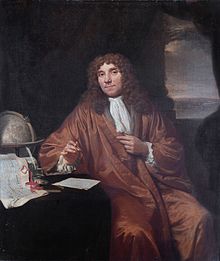User:Suzanne04/Sample page
Cell: The structural and functional unit of life.
[edit]
The body of living organisms is made up of cells. All the activities taking place in the body of organisms take place through cells. It is obvious that the body of each organism is made up of small units known as cells. Thus, cell is the chief structural and functional unit of organisms.[1]
A British scientist Robert Hooke, in 1665 AD, observed thin sections of cork with a microscope. He saw empty spaces or cavities and named them cell. Actually, the cells observed by Hooke were dead cells.

In 1674, Van Leeuwenhoek improved the microscope and observed living cells.

- The branch of science concerned with the structure and function of cell is known as Cytology.
- Unicellular organism, is an organism whose body is made up of only one cell. For example: Amoeba, Chlamydomonas etc.
- Organisms whose body is made up of more than one cell are known as Multicellular organisms.
- All the biological processes, like, nutrition, respiration, excretion, growth and reproduction, are carried out by the single cell in a unicellular organism.
- In multicellular organisms, different type of cell groups are found for different functions.
- The cell aggregates (groups) are termed as tissue.
- Majority of cells are minute and can be observed with microscopes only.
- Their average diameter is 0.5 to 20 microns. Some of the cells are very big for example the egg of an Ostrich which may range in size from 100 to 150 cm in diameter.
- The shape of cells vary according to the function they perform in the cells .[2]
Cell theory and its exceptions :
[edit]On the basis of discoveries made in 19th century, scientists inferred that the body of all plants and animals is made up of cells. These cells are responsible for all the biological processes and biological characteristics. On this basis, zoologist Theodor SchwanZon and Botanist Mathias Schleiden propounded the cell theory in the year 1838-39. According to this theory
1. The body of each living organism is made up of one or many cells.
2. The cell is the basic unit of life. All the life processes of a living being takes place in a cell.
3. The cell is the unit of heredity because hereditary material is present in its nucleus.
4. New cells are formed from the preexisting cells.
On the basis of modern discoveries the cell theory does not appear to be logical at many points. For example, the virus do not have a cellular structure; all the organisms are not made up of cells and a prominent nucleus is not present in all the cells. In bacteria and blue-green algae a well defined nuclear membrane is not present around the nuclear material, which remains dispersed in the cytoplasm.[citation needed]



Reference section
[edit]- ^ Smith, Jane. "Sample title". Sample website. Sample publisher. Retrieved 20 August 2021.
- ^ Jones, Bob (7 April 2021). "Sample headline". The Sample Times. Retrieved 20 August 2021.
External links section
[edit]cell Robert Hooke
